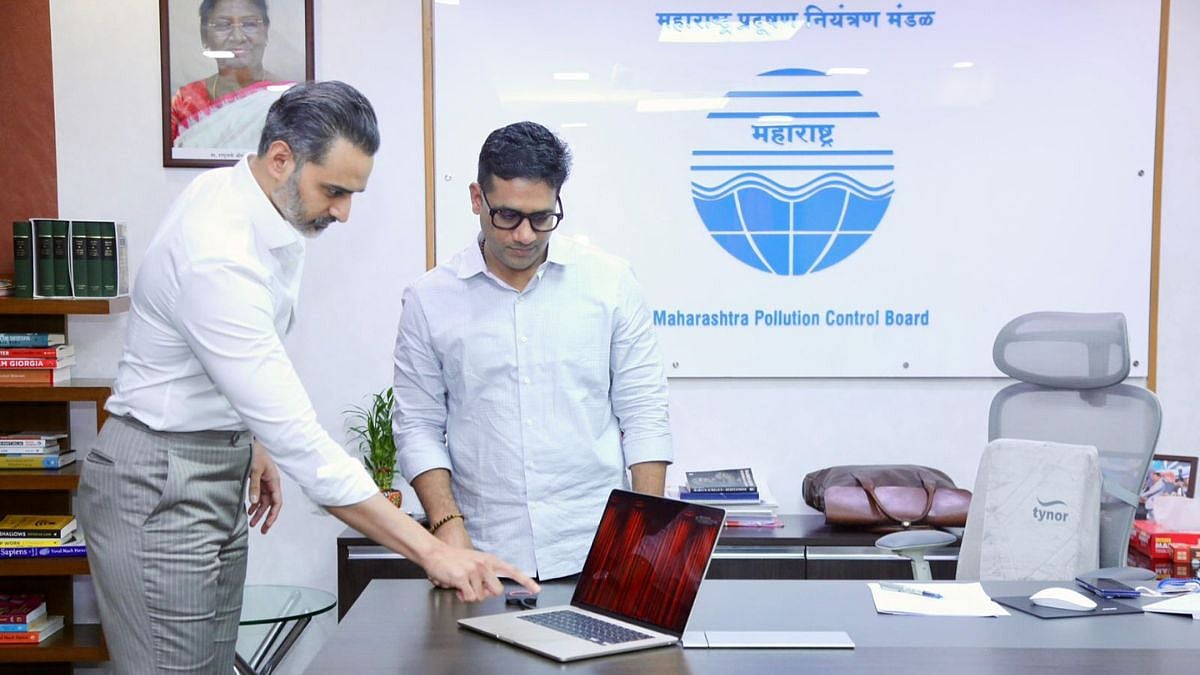Mumbai: In a high-stakes matrix of espionage, nuclear intelligence, and cross-border covert operations, the arrest of two individuals impersonating Bhabha Atomic Research Centre (BARC) scientists has uncovered a possible link with Pakistan’s clandestine nuclear programme. The central figure, Akhtar Hussaini Qutbuddin Ahmed (60), a master of deception, disclosed during interrogation that Pakistan’s Inter-Services Intelligence (ISI) had attempted to blackmail him into sharing sensitive technical information. He claimed to have successfully misled the ISI for years before his cover was compromised following India’s nuclear tests in 1998.
Investigators familiar with the interrogation records stated that Akhtar told them he had been operational in Iran from 1992 under a covert programme of the United States’ Central Intelligence Agency (CIA) aimed at sabotaging Iran’s nuclear development. As part of his assignment, he was reportedly involved in a deception operation targeting Iran’s nuclear research: monitoring developments and interacting with Iranian scientists who were unknowingly working on deliberately falsified reactor blueprints supplied by the CIA through him.
In mid-1995, Akhtar was approached in Dubai by an ISI operative who had learned fragments of his involvement in Iran’s reactor project. The Pakistani agency began blackmailing him to obtain the same “HWRs thermal-fusion reactor” design he had earlier provided to Iran. Unbeknownst to the ISI, the blueprint was a deliberately fabricated nuclear-fusion prototype engineered by the CIA to mislead Iran's nuclear research programme.Under threat of exposure to Indian authorities if he refused, Akhtar partially complied, supplying an altered version of the design to maintain his cover,while secretly briefed the CIA about the blackmail attempts of ISI.
According to Akhtar, The ISI’s blackmail allegedly did not end there.He was instructed to submit periodic updates on Iran’s nuclear research progress and was exploited to act as a liaison asset to influence Iranian contacts into procuring "Centrifuge machine technology" from Pakistan under the pretext of achieving a successful enrichment test.Following CIA directives, Akhtar said he supplied fabricated dossiers of Iran nuclear research data to the Pakistanis for several months in 1995, successfully maintaining his cover “on a razor’s edge” and diverting Pakistani attention away from his CIA-led operation.
Akhtar later told investigators that the ISI’s operational intent was dual-layered, strategic leverage and financial gain. By covertly supplying Iran with Pakistani-origin centrifuge assemblies, Islamabad sought to expand its regional influence while generating revenue through restricted nuclear-technology exchange. According to Akhtar’s statement, the CIA was fully apprised of the ISI’s manoeuvre and continued to task him with monitoring communication channels between Iranian procurement intermediaries and Pakistani technical liaisons.
Centrifuge machines, which spin uranium hexafluoride (UF₆) gas at high speeds to separate isotopes, are vital for both civilian nuclear power generation and weapons development. When uranium enrichment reaches approximately 90 percent U-235, it is classified as weapons-grade.
According to Akhtar's statement ,For the next three years, Akhtar managed to deflect Pakistani demands, citing as Iran had not yet reached the uranium-enrichment phase. However, the ISI reportedly continued coercive pressure until his cover was compromised following India’s 1998 nuclear tests.
In May 1998, under the Atal Bihari Vajpayee government, India conducted a series of nuclear tests at the Pokhran Test Range in Rajasthan. These tests were called Operation Shakti, and they included both fission and thermonuclear devices, demonstrating India’s nuclear capabilities.In response, Pakistan carried out its own nuclear tests just a few weeks later, in Chagai Hills, Balochistan,escalating South Asia’s nuclear arms race.
Also Watch:

The period proved extremely crucial. During this volatile phase, Akhtar’s duplicity was exposed before Iranian authorities. When questioned about India’s Pokhran nuclear tests, his false identity crumbled, and he was unmasked as a fabricated scientist in Tehran’s eyes. However, India’s security and intelligence agencies did not include this portion in their official investigation report. All information related to that period, including Akhtar’s movements and his communications with the CIA, India, and Pakistan,has reportedly been classified, citing the extreme sensitivity of the matter. The material remains under official verification.
To get details on exclusive and budget-friendly property deals in Mumbai & surrounding regions, do visit: https://budgetproperties.in/





